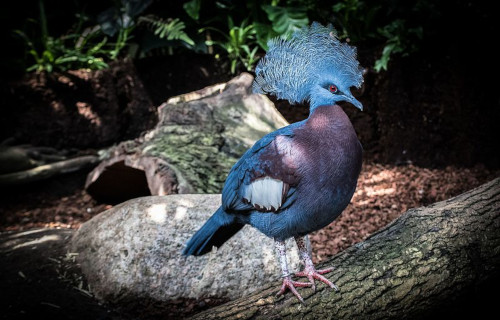
CCL: https://bit.ly/1xMszCg
We certainly hope that you greatly enjoy this article about 4 Giants of Their Kind. These absolutely deserve to be appreciated. Species, be it flora or fauna, come in all shapes and sizes, and these few chosen here stand out from their peers for their size.
Whether you find them visually appealing, or not, is up to each of you, of course. But this article isn’t about relative beauty, it’s about simple matters of pure measurement. Though certainly not the largest things on earth, these stand out as 4 Giants of Their Kind.
Mola Mola
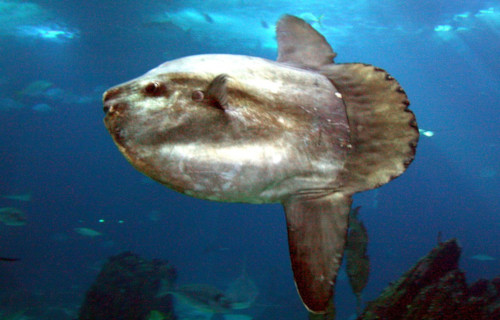
CCL: https://bit.ly/2MwSNGV
Mola Mola Facts
- Leading off this article about 4 Giants of Their Kind is the gargantuan variety of fish known as the Mola Mola.
- The truly distinctive name used applies to the largest known surviving variety of bony fish on earth. The amazing creature also goes by several other names, though. In this, it follows a pattern shared with many other species around the world.
- These multiple alternate common names include such distinctive terms as the common Mola, and the somewhat descriptive name Ocean Sunfish. But the frequently used name of Mola Mola derives from the Latin term.
- This fish also remains well known for a variety of reasons. For one, mature individuals typically develop a body shape measuring as tall as it does long. But, the animal also remains famous among researchers for a different, and remarkable reason.
- On average, the females of this truly impressive species of fish lay more eggs at one time than any other known creature. In point of fact, to be precise, the female sometime lays as many as a mind-boggling 300 million eggs at once.
- Despite its tremendous physical size, this denizen of the ocean has a quite docile temperament. Therefore, it poses no direct threat to human beings. The few reported injuries sustained by encounters with it occurred due to accidents.
- Presently, the IUCN classifies the animal as Vulnerable, on its Red List. Its primary threats come in the form of commercial fishing and encounters with boats. It also, unfortunately, now faces the threat of climate change, just as other species.
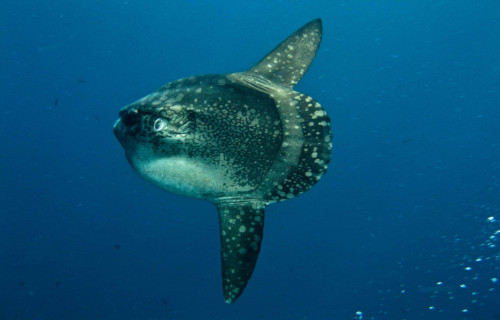
Mola Mola Physical Description
Incredibly, the Mola Mola represents a truly gigantic variety of bony fish. Physically mature adult specimens attain an average length of 5.9 ft (1.8 m). Yet, the impressive fish also reaches an average fin-to-fin vertical measurement of roughly 8.2 ft (2.5 m).
Exceptional individuals can grow to lengths of as much as 10.8 ft (3.3 m) in length and 14 ft (4.2 m) vertically. Along with this, it must be noted that this remarkably surprising species does not display any noticeable degree of the physical trait of sexual dimorphism.
Since this somewhat uncommon fact holds true, mature individuals of both genders attain an average weight equaling roughly 2,200 lb (1,000 kg). But, quite amazingly, the occasional exceptional individual can weigh as much as a massive 5,100 lb (2,300 kg).
Adding to its uniqueness, the incredible Mola Mola also presents a somewhat wide variety of skin colors. These typically range from white to silvery gray, and even brown. The majority of individuals, though, present distinct mottling among the colors present.
To make this amazing creature even more so, the marvel of Nature also possesses the ability to slightly alter its skin color at will. Thus, in addition to its many other fascinating traits, the species also has the ability to actively camouflage itself.
- Kingdom: Animalia
- Phylum: Chordata
- Class: Actinopterygii
- Order: Tetraodontiformes
- Family: Molidae
- Genus: Mola
- Species: M. mola
Mola Mola Distribution, Habitat, and Ecology
The Mola Mola inhabits an extremely wide territory range. That holds true due to the fact that the enormous animal appears in all of the temperate and tropical oceans of the world. The species does appear to be more common in the Atlantic and Pacific Oceans, though.
The startling creature appears to have evolved to be primarily pelagic in nature. Due to this, the magnificent animal most commonly thrives at depths ranging from the surface to about 2,000 ft (600 m). The huge fish also seems to prefer areas of open water.
But nevertheless, individuals do occasionally venture into regions such as kelp beds. The astounding Mola Mola further spends the greater portion of its time living as a solitary creature. Despite this trend, however, the creature is sometimes spotted in pairs.
Although it typically moves slowly through the water, this wonder of evolution also has the surprising ability to move quite rapidly at times. It has even been known to leap completely clear of the water, utterly startling observers with its actions.
Although individuals do modify their behavior at times, this astounding fish appears to feed primarily as an opportunistic predator. To that end, its diet most commonly includes a wide variety of prey, varying depending upon what part of its range it’s in at the time.
But, this list primarily includes such diverse prey as fish larvae, small fish, crustaceans, small squid, and jellyfish. Further surprising researchers, though, this member of our 4 Giants of Their Kind will also occasionally consume small amount of eel grass.
Victoria amazonica
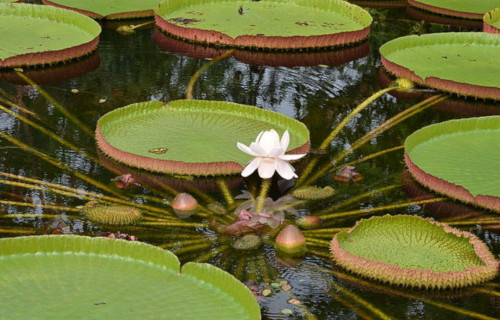
CCL: https://bit.ly/2Z3FR1M
Victoria amazonica Facts
- Next up in this listing of 4 Giants of Their Kind is the enormous plant known as the Victoria amazonica.
- The descriptive term for this flora represents the scientific name of a beautiful and truly impressive flowering plant. For the moment, though, this marvelous work of Nature unfortunately has no generally accepted common name.
- The physically amazing flora further forms a member of the magnificent Nymphaeaceae Family, in scientific classification. Not only that, but this incredible plant also currently represents the largest member of the amazing group.
- Both this individual species itself, and indeed the entire Family, in fact, share one uniquely impressive statistic. Quite amazingly to some people, both were named in honor of the late Queen Victoria, of England, in the year 1837.
- This honorary naming occurred subsequent to the first official publication of a description of the plant, by the renowned John Lindley. The French botanist Aimé Bonpland, though, made an unofficial description of it earlier, in 1825.
- Quite fortunately, for the moment, the gorgeous Victoria amazonica does not appear on the IUCN Red List of Threatened Species. The visually amazing plant nevertheless remains considered by many to be at some risk.
- This regrettable condition holds true due to a variety of factors. For one thing, the rapid deforestation of the region may soon threaten the species. Its greatest threat, though, no doubt comes in the form of the ongoing effects of climate change.
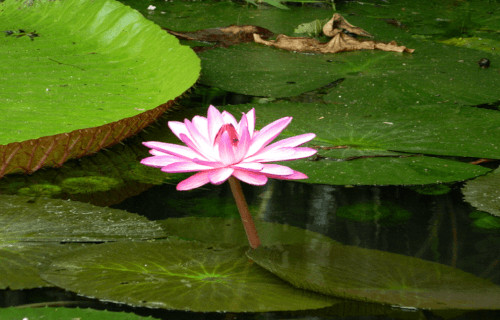
Victoria amazonica Physical Description
Easily ranking as one of our 4 Giants of Their Kind, the Victoria amazonica stands out from related species in one manner; its sheer size. This plant is the largest known member of its Family. The pads of this Angiosperm attain an average diameter of roughly 10 ft (3 m).
These remarkable portions of the fascinating beautiful plants also develop attached to incredible underwater stalks. In an astounding accomplishment of evolution, these components of the plant themselves sometimes reach up to a startling 26 ft (8 m) in length.
The surprisingly gorgeous blooms of the awesome Victoria amazonica themselves also deserve notice. These blossoms typically reach a diameter measuring about 15.75 in (40 cm), and appear as white on their first day, then change to pink afterwards.
The underside of the leaves shows a stunning purplish-red color, and also develops covered in numerous sharp spines. The upturned edges further add to its buoyancy. If evenly distributed, a single leaf can also support as much as 100 lb (45 kg).
- Kingdom: Plantae
- Phylum: Tracheophytes
- Class: Angiosperms
- Order: Nymphaeales
- Family: Nymphaeaceae
- Genus: Victoria
- Species: V. amazonica
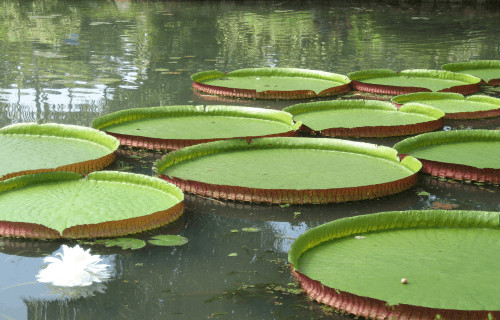
CCL: https://bit.ly/1p2b8Ke
Victoria amazonica Distribution, Habitat, and Ecology
Quite surprisingly, the visually stunning and scientifically fascinating Victoria amazonica inhabits a comparatively large section of the globe. Within that enormous overall zone of habitation, however, the distinctive Angiosperm only appears in a highly specific region.
Not surprisingly, as its name alludes to, this marvel of Nature only grows naturally in the Amazon River Basin in central and eastern South America. Even within this geographically large region, the Angiosperm has very specific needs for its choice of habitat.
It evolved to prosper in regions of shallow, slow-moving waters. Consequently, within its range, it appears almost exclusively in areas mostly consisting of bayous and oxbow lakes. A significantly smaller percentage of specimens appear in small swamps, though.
Fortunately, the beautiful Victoria amazonica also evolved as quite versatile in some aspects of its physiology. That’s because this plant achieves the vast majority of its pollination via the actions of the numerous varieties and numbers of beetles native to its range.
To take maximum advantage of this resource, a single plant can produce as many as 50 of these gargantuan pads. The growth rate of these features also leaves one astonished, because each of these leaves grows as much as 6 in (15 cm) per day.
Victoria Crowned Pigeon

CCL: https://bit.ly/1xMszCg
Victoria Crowned Pigeon Facts
- Appearing third in this compendium of 4 Giants of Their Kind, the Victoria Crowned Pigeon does so only due to random selection.
- Most impressively, this truly awesome form of pigeon ranks as the largest known type of pigeon in the world. This remarkable avian also represents one of only four unique, and comparatively quite large, species of pigeon in its genus.
- The truly distinctive creature also happens to share a relatively unusual trait with the other members of its genus. Like them, this fascinating and amazing variety of pigeon actually spends the majority of its life on the ground.
- Individuals of this species will, however, take flight if they are disturbed. But, that flight typically only extends to the nearest tree canopy. There, the fascinating animal will take shelter for as long as necessary, often making raucous noises.
- The beautiful bird now faces the threat of extinction. This occurs primarily due to a combination of habitat loss and hunting. Its population now numbers fewer than 20,000 individuals, thus the IUCN now lists it as Near Threatened.
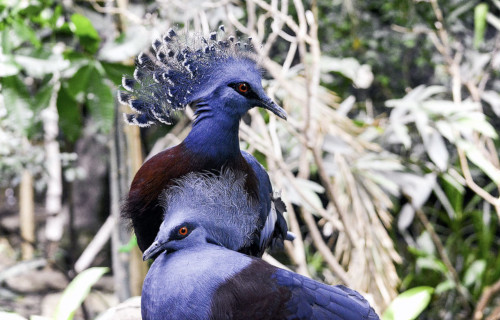
Victoria Crowned Pigeon Physical Description
The dazzling Victoria Crowned Pigeon truly forms one of the 4 Giants of Their Kind. This breathtaking bird averages a body length of about 30 in (75 cm). Exceptional individuals, though, sometimes reach 31 in (80 cm). Large individuals weigh as much as 7.7 lb (3.5 kg).
Yet its sheer size isn’t the only remarkable trait of this magnificent animal. Quite uniquely, it also boasts a gorgeous feather crest. This also typically presents a brilliant blue in color, with the ends of the feathers commonly being tipped in a bright white.
The body itself most often presents a deep gray-blue in color, and a small black mask-like feature also appears on the face. The wings display a lighter shade of blue, with conspicuous maroon colored tips. The bird displays no noticeable degree of sexual dimorphism.
- Kingdom: Animalia
- Phylum: Chordata
- Class: Aves
- Order: Columbiformes
- Family: Columbidae
- Genus: Goura
- Species: G. victoria
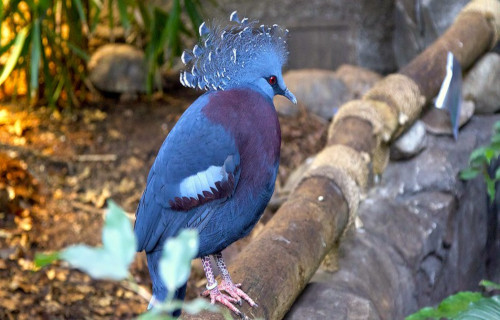
CCL: https://bit.ly/1eBd9Ks
Victoria Crowned Pigeon Distribution, Habitat, and Ecology
Like numerous other species, the magnificent Victoria Crowned Pigeon only inhabits a very limited area. In its case, that area mainly consists of the northern sections of New Guinea, near Australia. However, it also inhabits a few small neighboring islands.
Even within this already limited range, this fabulous bird usually only appears on specific habitat types within the region. These mainly include areas of lowlands and swamp forests, but the bird will also sometimes appear in regions of sago forests.
Interestingly, it also most commonly lives either near or at approximate sea level. Some individuals, though, will occasionally appear at altitudes of as much as 3,000 ft (914 m). These specimens, though, usually have only ventured to the area temporarily.
Much like its numerous related species, the beautiful type of pigeon evolved as a highly gregarious animal. Because of this, it rarely moves alone. Most often, it travels in small groups, at a slow pace, along the floor of the forest.
Although it primarily eats fruit, it also feeds on small invertebrates and seeds on occasion. Its favorite fruit consists of figs, though it will consume other fruit if readily available. Seeds and invertebrates it consumes opportunistically, with no noticeable preference.

CCL: https://bit.ly/1xMszCg
4 Giants of Their Kind
We sincerely hope that you have enjoyed this article about 4 Giants of Their Kind. These represent species that stand out for sheer size, as opposed to other differences. But regardless of size, all species on this planet are equally deserving of appreciation.
Many species around the world now find themselves facing the very real threat of extinction. It remains up to each and every one of us to do all that we can to protect and preserve these wonders of Nature, both for ourselves and for our posterity.
Check out our other articles on 5 Astonishing True Bugs, Earth’s Many Astounding Beetles, Rare North American Flowering Plants, Earth’s Geothermal Marvels
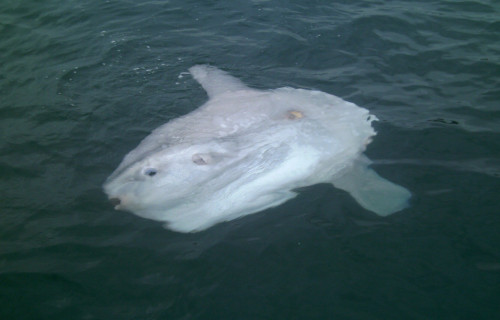









Leave a Reply